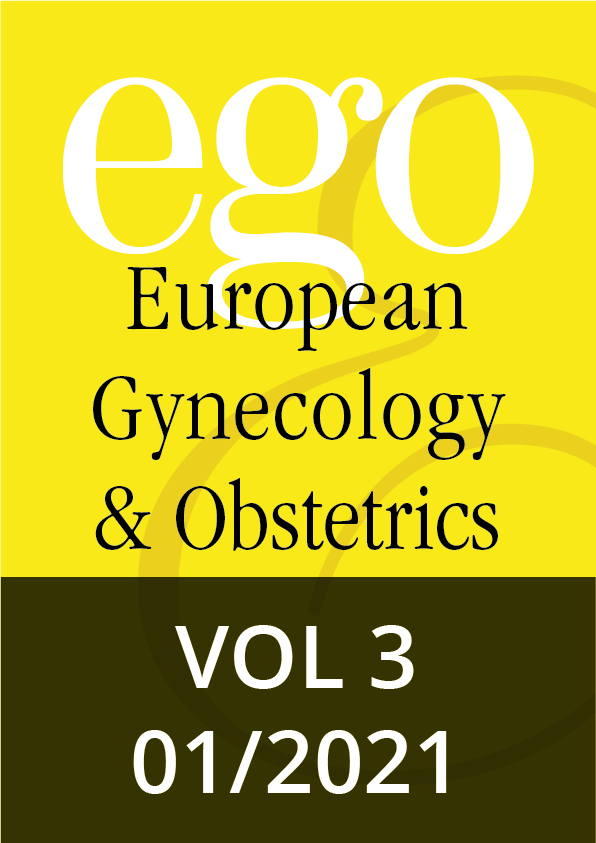Position paper, 002–012 | DOI: 10.53260/EGO.213011
Short reviews, 013–021 | DOI: 10.53260/EGO.213012
Short reviews, 022–028 | DOI: 10.53260/EGO.213013
Reviews, 029–033 | DOI: 10.53260/EGO.213014
Case reports, 034-036 | DOI: 10.53260/EGO.213015
Case reports, 037–039 | DOI: 10.53260/EGO.213016
Case reports, 040–043 | DOI: 10.53260/EGO.213017
Case reports, 044–047 | DOI: 10.53260/EGO.213018
Original articles, 048–053 | DOI: 10.53260/EGO.213019
Original articles, 054–057 | DOI: 10.53260/EGO.2130110
Palliative care in gynaecology
Abstract
Despite advances in the management of gynaecological oncological diseases patients are still presenting at advanced or terminal stages of diseases. Up to 25% of women diagnosed with a gynaecological malignancy will die from recurrent disease. The art of palliative care is often lacking despite it offering so much relieve of suffering to those who have the disease and their loved ones. The World Health Organisation states that “palliative care is an approach that improves the quality of life of patients and their families facing the problems associated with life-threatening illness, through the prevention and relief of suffering by means of early identification and treatment of other problems, physical, psychosocial and spiritual”. During this review we look through the most common challenges faced by patients with terminal gynaecological malignancies, and review how the optimal management of these complications improves the quality of care and therefore life of the patients.
Keywords: analgesia, ascites, bowel obstruction, pain, Palliative care
Citation: Gambin J.,Brincat M., Palliative care in gynaecology, EGO European Gynecology and Obstetrics (2021); 2021/01:029–033 doi: 10.53260/EGO.213014
Published: January 1, 2021
ISSUE 2021/01

Position paper, 002–012 | DOI: 10.53260/EGO.213011
Short reviews, 013–021 | DOI: 10.53260/EGO.213012
Short reviews, 022–028 | DOI: 10.53260/EGO.213013
Reviews, 029–033 | DOI: 10.53260/EGO.213014
Case reports, 034-036 | DOI: 10.53260/EGO.213015
Case reports, 037–039 | DOI: 10.53260/EGO.213016
Case reports, 040–043 | DOI: 10.53260/EGO.213017
Case reports, 044–047 | DOI: 10.53260/EGO.213018
Original articles, 048–053 | DOI: 10.53260/EGO.213019
Original articles, 054–057 | DOI: 10.53260/EGO.2130110
